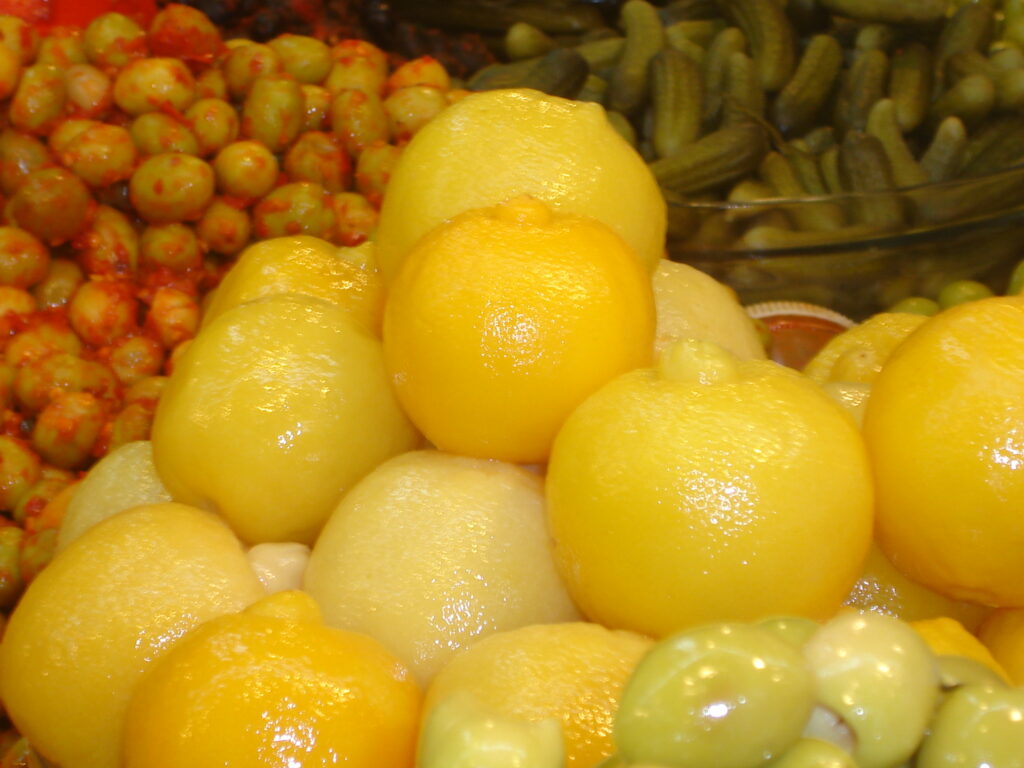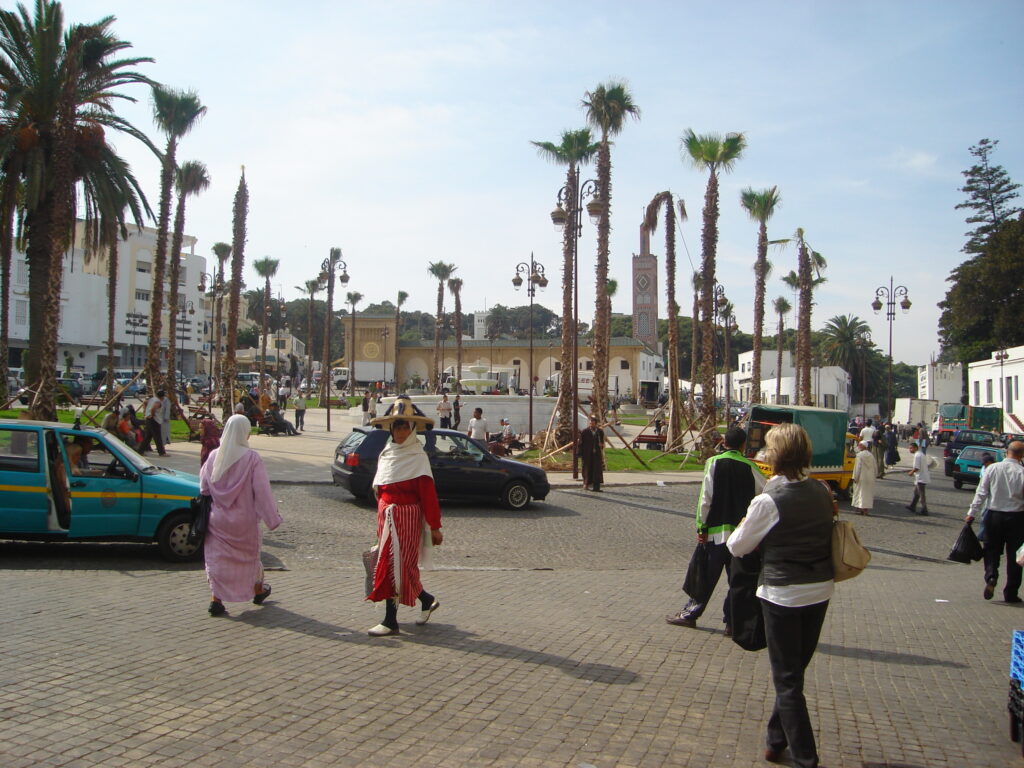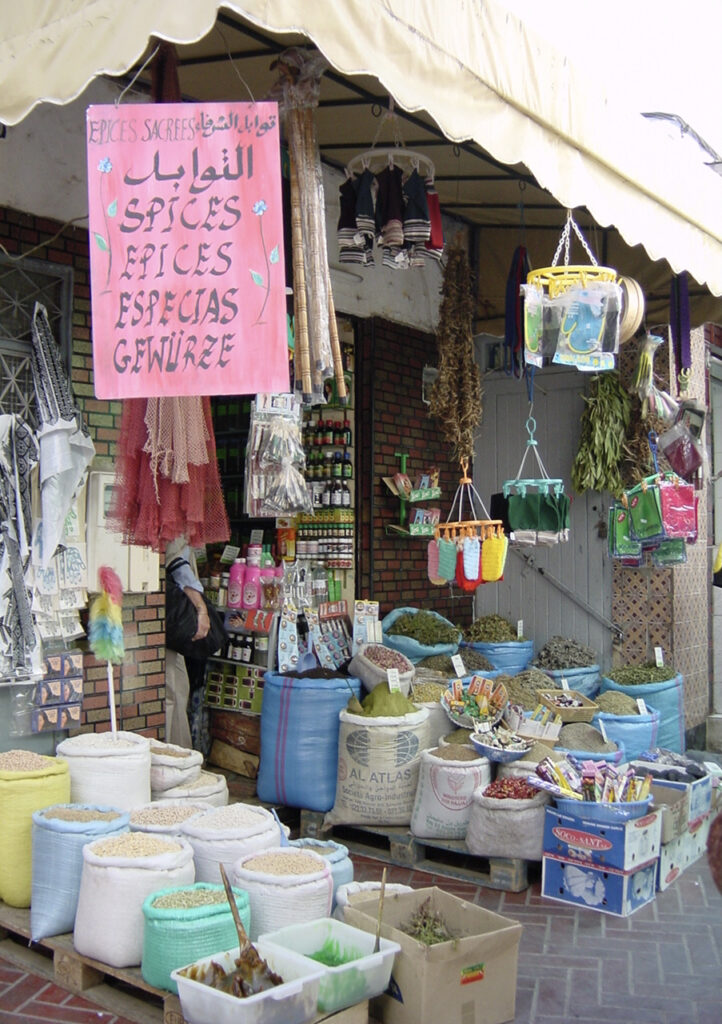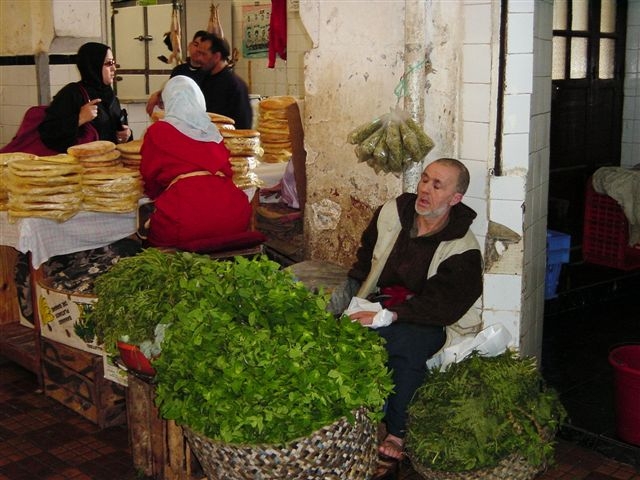A labyrinth of streets in the medina, haggling in the souks, a sputtering moped, a loaded camel, authentic craft wares, antiques galore… These are Tangier’s sounds and sights, but its true pulse is taken through the taste buds. So, this is Tangier’s food as if you were there.
Tangier’s Tasty Transitions
In the 1950s, Tangier was a fashionable playground for free-spirited Western intellectuals and artists. Today, it’s a destination for tourists, designers, and foodies.
The change began in 1999 when King Mohammed VI succeeded his father and promised to modernize a decaying Tangier: a new harbor and train station, sewage lines in the medina, city beautification, and more. The food market hangar might change too, but Moroccan cuisine will stay.
Moroccan food is a sense pleaser for good reasons. First, it was influenced by the Phoenicians, then the Middle Easterners, and then El Andaluz—the former Muslim-ruled Iberian Peninsula. Second, has to do with the various kings’ evolving tastes for regal dishes. Third, Morocco is blessed with the finest ingredients, from the fertile green belt of the Northwest to the sun-drenched land of the South.
Today, as world cultures meet, Morocco is getting teased by culinary trends, but tradition remains the source. In terms of culinary arts, the national dish, couscous, is relatively simple to prepare, but steaming the grain traditionally is not. And yet, it started as a humble Berber specialty. So did the lesser-known bisteeya, until paper-thin Persian pastry and Andalusian influences turned it into a lavish, flaky-layered pigeon/chicken pie, with eggs curdled in lemon—for the Tetouan style—garlic, onions, almonds, seasoning galore, and a dusting of cinnamon and sugar. The result can be a four-inch-thick, delicious, and mind-blowing crumbling affair.
Food That Will Knock Your Taste Buds Off
In the covered market, concrete block booths line up by product type. Vendors are locals, but here and there, women in traditional dresses in bold colors sell their products from baskets laid on the mud floor. They are Berber tribal people from the rugged slopes of the nearby Rif Mountains. And their products are as ‘whole food’ as it gets.
The market is usually crowded, so it’s best to go with the flow. You may then encounter pickles so pungent that they clear your sinuses. Along with them are olives, from the sweet black olives for tapenades to the seasoned green ones for tagines—a traditional stew cooked in a glazed dish with a hat-shaped lid. Taste them all by buying a sample of the multicolored bunch, but beware of the harissa-spiced ones—think ‘fiery hot chili peppers.’ The same stall will also sell another key ingredient of Moroccan cuisine: lemons preserved in salted lemon juice, and sold by the piece or in jars.
Next up are stalls with hefty piles of plump nuts, dried figs, and fresh dates clustered on their stems. These ingredients contribute to the sweet and savory taste of tagines. Fruit and vegetables abound and are remarkably fresh. Vendors know better than risking the wrath of a Moroccan housewife.
If something tickles your nose, you are getting close to the spice stalls and their combined aromas. The display is vivid and bright, something like a landscape. Coarse seeds of cumin, fennel, anise, and coriander contrast with the powdery golden turmeric, rusty paprika, and blended spices in shades of browns and greens.
A fragrant souvenir of Tangier would be the mystical ras-el-hanout, a jumble of the 20 to 40 key spices of Moroccan cuisine. A vendor with a twinkle in his eyes might warn your that some of the ingredients include more than traces of aphrodisiacs. That this spice mix must be of the best quality led to its name, translatable as “from the top of the shop.”
Aromatics is an art that Moroccan housewives master. They know how to elevate a flavor without overpowering it. Still, spices and herbs are profusely used, hence the numerous booths at the market. Besides, they load your plate with beneficial properties.
Be curious, even if you won’t cook since you are on holiday. Go to the fish market. Tangier is at the confluence of the Atlantic Ocean and the Mediterranean Sea. The fish is fresh. And don’t veer away from the meat market, even if flies get the first bite. You might also notice that no part of an animal is wasted. From the meat quarters draping the sides of a booth, to the mounds of entrails available for sale, a veterinarian could put the animal back together, rawhide aside.
Next up are the cheese stalls. My favorite is the jben beldi , a white, soft cheese made with sheep or goat milk. I use it for tapas: air-dried for a couple of days, then cubed and topped with a thin slice of membrillo (quince paste).
Frown, if you must, as you smell the content of round earthenware bowls with a loose lid. Smen is to Moroccan cuisine what butter is to the French, except that it smells somewhat like blue cheese. Made from clarified butter—traditionally churned from camel milk—salt, and dried herbs, it was a traditional keepsake from birth to a wedding.
At the first whiff of fresh bread, look for the nearest stall. It will offer a restorative snack: either the crumpet-like beghrir, or a puff-pastry-like rghaif. Drizzled with butter and honey, or sprinkled with (fresh) jben beldi cheese. Enjoy it right away, or it will quickly lose its freshness.
Finally, don’t leave without a bunch of lush mint and verbena. You might not use much of it, but for one euro or two (Moroccan vendors like euros), their energizing scents will somehow revive you now and relax you later. How about some delicate, tiny rosebuds to place on your nightstand? Or fragrant orange flowers to refresh your bathroom? How about infusing them, Moroccan style? You decide.
More articles about Morocco:
A Shopping Marathon in Tangier – Morocco: Vintage Textiles and Jewelry – Made in Morocco
First published 2012 Buckettriper.com – edited 2024






